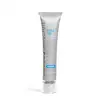What's inside
What's inside
 Key Ingredients
Key Ingredients

 Benefits
Benefits

 Concerns
Concerns

No concerns
 Ingredients Side-by-side
Ingredients Side-by-side

Water
Skin ConditioningSodium Silicate
BufferingMagnesium Aluminum Silicate
AbsorbentMagnesium Aspartate
Skin ConditioningZinc Gluconate
Skin ConditioningCopper Gluconate
Skin ConditioningCamellia Oleifera Leaf Extract
AstringentButylene Glycol
HumectantSodium Hyaluronate
HumectantRetinyl Palmitate
Skin ConditioningCaprylyl Glycol
EmollientPhenoxyethanol
PreservativeHexylene Glycol
EmulsifyingCI 77492
Cosmetic ColorantWater
Skin ConditioningSodium Magnesium Silicate
Propanediol
SolventMagnesium Aluminum Silicate
AbsorbentPhenoxyethanol
PreservativeLecithin
EmollientKappaphycus Alvarezii Extract
Skin ConditioningCaffeine
Skin ConditioningSynthetic Fluorphlogopite
Acetyl Glutamine
Skin ConditioningHesperidin Methyl Chalcone
AntioxidantCaesalpinia Spinosa Fruit Extract
Skin ProtectingTitanium Dioxide
Cosmetic ColorantCaprylyl Glycol
EmollientEthylhexylglycerin
Skin ConditioningHexylene Glycol
EmulsifyingSteareth-20
CleansingSh-Oligopeptide-1
Skin ConditioningSh-Oligopeptide-2
Skin ConditioningDipeptide-2
Skin ConditioningSodium Hyaluronate
HumectantSh-Polypeptide-1
Skin ConditioningSh-Polypeptide-9
Skin ConditioningSh-Polypeptide-11
Bacillus
Skin ConditioningBoswellia Serrata Extract
Skin ConditioningCentella Asiatica Extract
CleansingPalmitoyl Tetrapeptide-7
Skin ConditioningButylene Glycol
HumectantBetula Alba Bark Extract
MaskingChlorhexidine Digluconate
AntimicrobialTin Oxide
Abrasive1,2-Hexanediol
Skin ConditioningPotassium Sorbate
PreservativePolygonum Cuspidatum Root Extract
AntioxidantPEG-12 Dimethicone
Skin ConditioningCamellia Sinensis Leaf Extract
AntimicrobialSodium Benzoate
MaskingIron Oxides
Water, Sodium Magnesium Silicate, Propanediol, Magnesium Aluminum Silicate, Phenoxyethanol, Lecithin, Kappaphycus Alvarezii Extract, Caffeine, Synthetic Fluorphlogopite, Acetyl Glutamine, Hesperidin Methyl Chalcone, Caesalpinia Spinosa Fruit Extract, Titanium Dioxide, Caprylyl Glycol, Ethylhexylglycerin, Hexylene Glycol, Steareth-20, Sh-Oligopeptide-1, Sh-Oligopeptide-2, Dipeptide-2, Sodium Hyaluronate, Sh-Polypeptide-1, Sh-Polypeptide-9, Sh-Polypeptide-11, Bacillus, Boswellia Serrata Extract, Centella Asiatica Extract, Palmitoyl Tetrapeptide-7, Butylene Glycol, Betula Alba Bark Extract, Chlorhexidine Digluconate, Tin Oxide, 1,2-Hexanediol, Potassium Sorbate, Polygonum Cuspidatum Root Extract, PEG-12 Dimethicone, Camellia Sinensis Leaf Extract, Sodium Benzoate, Iron Oxides
Ingredients Explained
These ingredients are found in both products.
Ingredients higher up in an ingredient list are typically present in a larger amount.
Butylene Glycol (or BG) is used within cosmetic products for a few different reasons:
Overall, Butylene Glycol is a safe and well-rounded ingredient that works well with other ingredients.
Though this ingredient works well with most skin types, some people with sensitive skin may experience a reaction such as allergic rashes, closed comedones, or itchiness.
Learn more about Butylene GlycolCaprylyl Glycol is a humectant and emollient, meaning it attracts and preserves moisture.
It is a common ingredient in many products, especially those designed to hydrate skin. The primary benefits are retaining moisture, skin softening, and promoting a healthy skin barrier.
Though Caprylyl Glycol is an alcohol derived from fatty acids, it is not the kind that can dry out skin.
This ingredient is also used as a preservative to extend the life of products. It has slight antimicrobial properties.
Learn more about Caprylyl GlycolHexylene Glycol is a surfactant. Glycols are a class of alcohols. Hexylene Glycol is a surfactant and emulsifier.
As a surfactant, Hexylene Glycol helps gather dirt and oil on your skin to be washed away.
As an emulsifier, Hexylene Glycol helps keep water and oil together. This prevents them from separating in a product. Hexylene Glycol also thins out the texture of a product by lessening viscosity.
Hexylene Glycol has a small molecular weight.
Learn more about Hexylene GlycolMagnesium Aluminum Silicate is a type of silica. It comes from naturally occuring minerals such as silicate ores and clay.
Magnesium aluminum silicate is used for enhancing texture and as an absorbent. Due to its large molecular size, it is unable to be absorbed into the skin.
Like other types of silica, this ingredient can be used to thicken a product. As an absorbent, it may be used to absorb extra water or help prevent clumping.
Although “aluminum” in an ingredient name can raise red flags for some consumers, the form and usage context matter significantly. For typical topical applications, there is no substantial evidence of health risks - such as cancer, neurotoxicity, or systemic “aluminum overload.”
Learn more about Magnesium Aluminum SilicatePhenoxyethanol is a preservative that has germicide, antimicrobial, and aromatic properties. Studies show that phenoxyethanol can prevent microbial growth. By itself, it has a scent that is similar to that of a rose.
It's often used in formulations along with Caprylyl Glycol to preserve the shelf life of products.
Sodium Hyaluronate is hyaluronic acid's salt form. It is commonly derived from the sodium salt of hyaluronic acid.
Like hyaluronic acid, it is great at holding water and acts as a humectant. This makes it a great skin hydrating ingredient.
Sodium Hyaluronate is naturally occurring in our bodies and is mostly found in eye fluid and joints.
These are some other common types of Hyaluronic Acid:
Learn more about Sodium HyaluronateWater. It's the most common cosmetic ingredient of all. You'll usually see it at the top of ingredient lists, meaning that it makes up the largest part of the product.
So why is it so popular? Water most often acts as a solvent - this means that it helps dissolve other ingredients into the formulation.
You'll also recognize water as that liquid we all need to stay alive. If you see this, drink a glass of water. Stay hydrated!
Learn more about Water